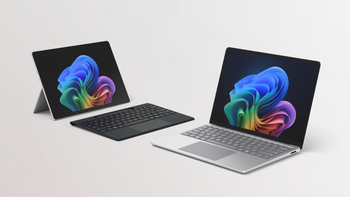The Moto X is not a "mid-range" device, it's top-shelf
This article may contain personal views and opinion from the author.

Throughout the rumor phase of the Motorola Moto X, the device got the reputation of being a "mid-range" device, or being a phone that uses "last year's hardware", because people would see that the phone was rumored to have a Snapdragon S4 Pro, and simply assume the worst. It's time we all put away that misconception, because the Moto X is not a "mid-range" device, and it isn't using "last year's hardware". The Moto X is a top-tier device that can hang with any flagship on the market right now.
Let's be clear though. I'm not trying to argue that the Moto X has "cutting edge" specs or performance, because that's not the point. There are only a few devices on the market around the world that are using the Snapdragon 800, which is the "cutting edge". The point is that the current "top-of-the-line" smartphones are the Samsung Galaxy S4 and HTC One, which each run the Snapdragon 600. And, on that front, the Moto X can go toe-to-toe with either. Simply because a device isn't "cutting edge" doesn't relegate it to the "mid-tier" status unless we're prepared to drop all current flagships down a notch.
The truth behind the Motorola X8 SoC and display
We have covered Motorola's X8 processor before (twice actually), but it is worth running through it again, because some people have chosen to ignore what the chip is and what it can do, and focus on the misleading label that it has just a "dual-core CPU". Yes, the CPU of the X8 is basically what you might find in the Nexus 4, but that alone tells just a fraction of the story. As Apple has been trying to hammer home for the last couple years: the CPU of a mobile device is nowhere near as important as the GPU. And, in the GPU department, the X8 has the quad-core Adreno 320, which you would find on a Snapdragon 600 (which is the same chip that you'd find in the U.S. variant of the Samsung Galaxy S4, and the HTC One). Sure, the Snapdragon 800 has begun shipping in a few devices around the world, but it has nowhere near the widespread release needed to consider the 600 a "mid-range" SoC just yet.
Then, you can't talk about the X8 without talking about the two companion cores: one for contextual computing, and one for natural language processing. These two cores are designed to offload a fair amount of the ancillary workload from the main CPU, mostly to help with battery life. The "contextual computing core" handles all of the info from the device sensors, as well as anything run while the device is in standby mode; and, the natural language core which does exactly what it sounds like and handles voice commands, dictation, etc.
The result is a chipset that sounds quite a bit like Samsung's much-hyped Exynos Octa with the ARM big.LITTLE design. With big.LITTLE, you have four A15 cores that can do the heavy lifting, and four A7 cores for lighter work. The limitation of the big.LITTLE design is that there is no way to mix-and-match the workload between the core clusters. This means that you either have to have the A15 cores running or the A7s, and you can't have low-priority tasks running on the A7 while doing bigger stuff with the A15s
On the other hand, the X8 is designed for multitasking, because the companion cores are always ready to go in the background. In the commercials for the Moto X, Motorola shows how you can launch Google Now without touching the device with the activation phrase, but the thing is that you can do that at any time, even if you're using the device. So, even if you're doing something on the phone that requires a lot of power, and you say "OK Google Now", that companion core will still be ready and start up when you need it. In this way, the X8 is much more sophisticated than it usually gets credit for.
The other feature of the Moto X that is often pointed to as proof that the device is "mid-range" is the 720p display. I'll just be blunt right now: this is utter B.S. The truth is two-fold here. First, unless you have a 720p device and a 1080p device side-by-side, and you are carefully studying the displays, it is nearly impossible to see the difference between a 720p display and 1080p on a smartphone. The vast majority of users cannot, and will not notice any difference in clarity between 720p and 1080p in normal usage. However, you may notice the difference in performance, because the second truth is that the Adredo 320 in the Moto X will perform better than on the Galaxy S4 or HTC One, because it doesn't have to push as many pixels.
The benchmarks
That's as good a spot as any to switch into the benchmarks side of the story, because I know that benchmarks are really the only thing that some peopel care to understand. And, here's the breakdown: the Moto X beats the Samsung Galaxy S4 in every GPU test, beats the S4 in SunSpider testing and Kraken, and scored just below the S4 in Google's Octane test. The only benchmark where the Moto X scored significantly less than the Galaxy S4 is in Geekbench, which of course is the test that you're least likely to see translate into real world performance differences. The differences in some of the GPU tests are pretty stark, and might be enough to prove that Motorola's decision to choose a less battery-hungry, and less GPU intensive 720p display was a good choice.
Conclusion
The Moto X is a flagship device with a sophisticated SoC that is more like the "high-end" flagships than it is the "mid-tier" devices. The display is crisp, and has the punchy, absorbing colors that you would expect from an AMOLED display. The performance is top-notch, and as I talked about yesterday, Motorola has been careful to add value through useful feature additions, and not just loading up the device with as much bloat as possible. Add in the benchmarks, which prove that the Moto X is a legit device, and we're back at the original idea of this column: the Moto X isn't a "mid-tier" device, and it isn't using "last year's hardware".
I could have made this a much shorter column, and simply written "When I first picked up the Moto X last night, I realized that this was not the mid-spec device that we thought it would be." And, that would have been 100% accurate. The Moto X is fast, responsive, and noticeably quicker than my Nexus 4, which really is a mid-tier device at this point. The Moto X may be eclipsed this fall as more and more devices launch with Snapdragon 800s, but right now, it is definitely a top-shelf device.
reference: Moto X Performance testing (Ars Technica)













Things that are NOT allowed: